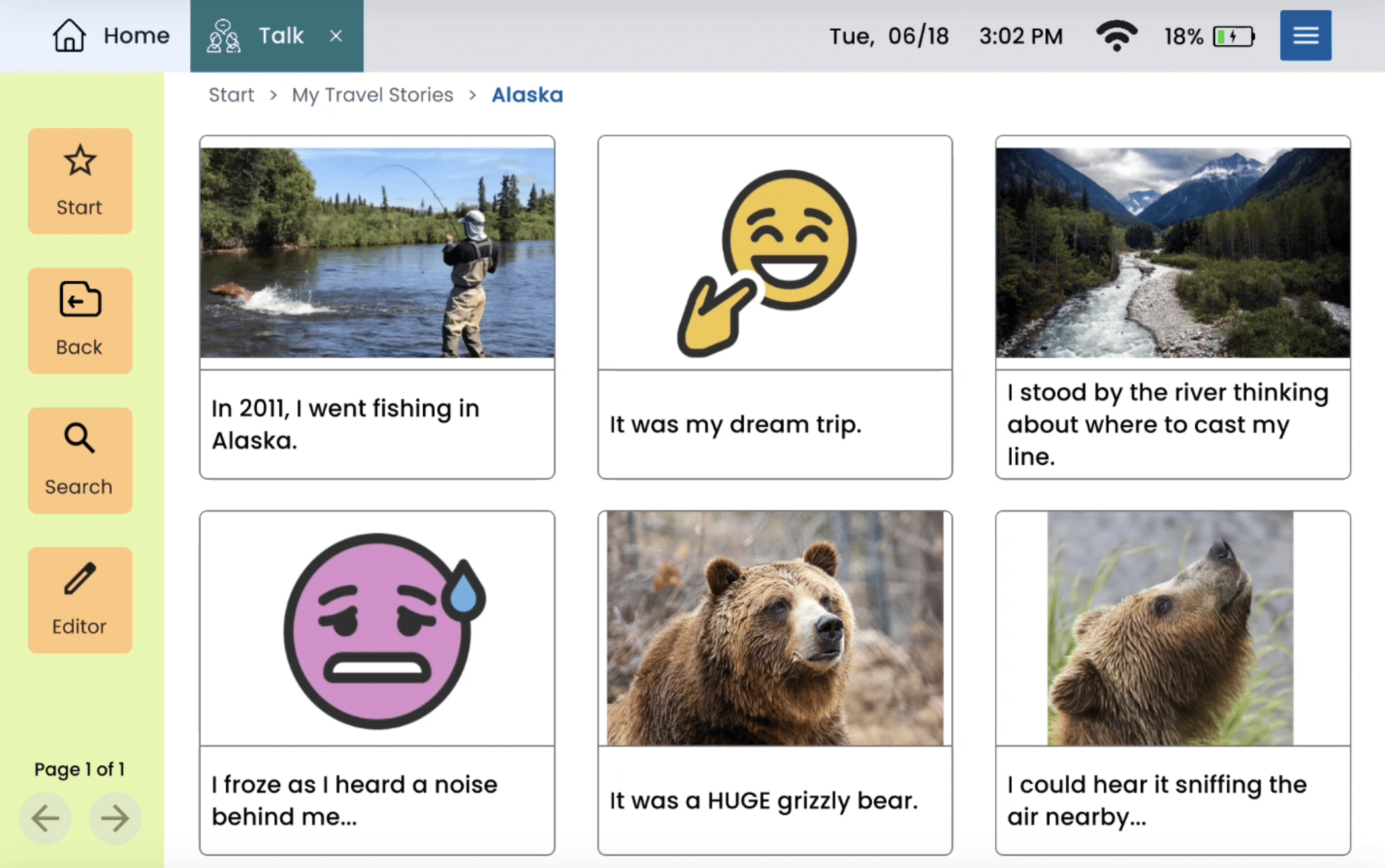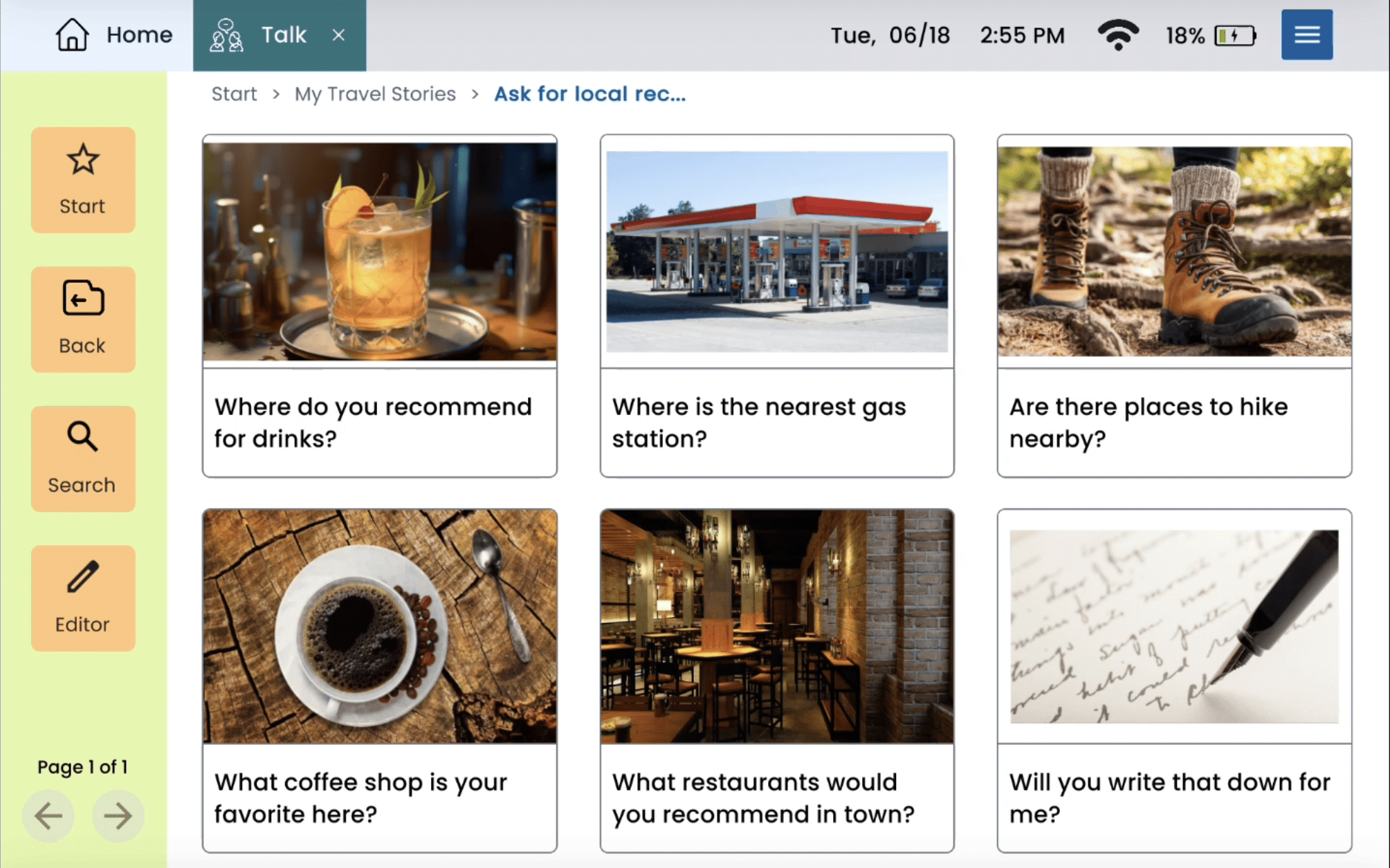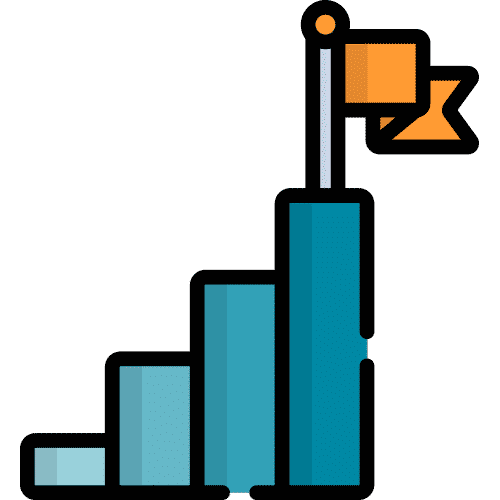For people living with aphasia, personalized Augmentative and Alternative Communication (AAC) devices improve language and life.
Before his stroke, Bruce* had always been passionate about travel and videography. He’d visited 12 different countries, filming videos along the way to document his incredible journey.
But after Bruce was diagnosed with moderate-severe expressive aphasia following his stroke in 2022, he and his family felt their hearts sink as doctors told them he would probably never be able to enjoy these hobbies again.
After all, Bruce struggled to say “hello” and “goodbye” — how on earth would he ever be able to share the stories of when he watched Flamenco dancers in Spain or narrowly dodged a Grizzly bear in Alaska?
This is where the power of customizable Augmentative and Alternative Communication (AAC) devices comes in, so that people like Bruce can have pre-stored messages and stories available to them that can be spoken with the tap of a finger, like this:

Research shows that introducing AAC can enhance a person with aphasia’s quality of life and language abilities — even years after their initial stroke, injury, or illness. [1,2,3]
Keep reading to see how a customizable AAC device can help your loved one rejoin conversations and live life to the fullest — despite aphasia. ⬇️
Introducing AAC Can Improve Language Skills in Aphasia Recovery
We sometimes hear from care partners who are concerned that trying AAC could prevent their loved one with aphasia from regaining their speech. There are quite a few myths about AAC floating around the stroke recovery community — and this is one of them.
Here’s what the research has to say about using AAC:
- AAC can have a positive effect on speech production and language recovery and is recommended as a therapy tool for individuals with aphasia [4]
- The best conversational outcomes happen when a person with aphasia has the option to use both speech and AAC (it serves as a great backup plan!) [5]
- Using AAC can improve anxiety, depression, and feelings of isolation by helping people more easily return to the activities they enjoy
To sum up the science: the more your loved one uses their AAC device, the more it can help them recover their language abilities and improve their quality of life.
Like how this one Lingraphica device user was able to regain his speech 20 years after his stroke by using the built-in therapy and voice recording features regularly.
Now that you understand the research, let’s explore why customizing an AAC device is so important.
Device Customization is the Key to Success with AAC
Communication is not a one-size-fits-all approach.
This rule applies to everyone – especially AAC users and people with aphasia.
Sometimes, we meet people with aphasia who have used a simple communication board or a high-tech AAC device that wasn’t customized. These tools can be good first steps to introduce AAC. However, without customization, they leave the person with limited vocabulary, causing frustration and disinterest.
But when your loved one’s AAC device supports their life and vocabulary needs, they’re much more likely to actually use it to communicate (and reap the benefits we discussed above).
This idea aligns with the Life Participation Approach to Aphasia (LPAA), which emphasizes communication competence, inclusion, and supporting people impacted by aphasia so that they can re-engage with life.[6]
Bruce’s AAC device is a perfect example. It features videos from his adventurous trips, travel stories, and phrases to help him explore new places.
There’s a big difference between what Bruce can share with a communication board vs. his customized Lingraphica device:

With this vocabulary programmed into his Lingraphica TouchTalk, Bruce can do the things that are most important to him.
Your loved one has unique thoughts, feelings, and ideas they want to share, too — just as they did before aphasia.
And because we know device personalization is necessary for success with AAC, we have an entire team at Lingraphica to help you customize your loved one’s device — for free.
Get Dedicated Support Throughout Your Loved One’s AAC Journey
Having access to a customized AAC device can significantly improve a person with aphasia’s quality of life and language recovery.
We’d love to help your loved one be a part of conversations again.
Whenever you decide to start a Lingraphica AAC device trial, you’ll have support from our team each step of the way to:
- Help you customize your loved one’s AAC device before you even receive it
- Coordinate with your health insurance plan and medical team
- Provide resources and training so that you and your loved one can use your Lingraphica AAC device with ease
And using our support services is always free — including communication coaching sessions and lifetime tech support.
Ready to see if a Lingraphica AAC device could help your loved one with aphasia?
Schedule a free call with one of our communication specialists by clicking the button below.
No obligation to purchase.
Or, if you’d like to speak with someone immediately, you can call us now toll free at (888) 965-6005 or direct (609) 275-1300. We are available Monday to Friday, 8:30 a.m. to 8:00 p.m. ET.
P.S.: It’s never too late to try AAC. If you’re on the fence, you should hear from Jo Free, who got her voice back 15 years after her stroke.
*Note: Names and identifying characteristics have been changed.
References:
[1] Price, C. J., Seghier, M. L., & Leff, A. P. (2010). Predicting language outcome and recovery after stroke: the PLORAS system. Nature reviews. Neurology, 6(4), 202–210. https://doi.org/10.1038/nrneurol.2010.15
[2] Dietz, A., Wallace, S. E., & Weissling, K. (2020). Revisiting the role of augmentative and alternative communication in aphasia rehabilitation. American Journal of Speech-Language Pathology, 29(2), 909–913. https://doi.org/10.1044/2019_AJSLP-19-00041
[3] Dietz, A., Vannest, J., Maloney, T., Altaye, M., Holland, S., & Szaflarski, J. P. (2018). The feasibility of improving discourse in people with aphasia through AAC: Clinical and functional MRI correlates. Aphasiology, 32(6), 693–719. https://doi.org/10.1080/02687038.2018.1447641
[4] Steele, R. D. (2004). Benefits of advanced AAC technology uses to adults with acquired aphasia. ASHA Leader. https://doi.org/10.1044/aac13.4.3
[5] Garrett, K., Beukelman, D., & Low-Morrow, D. (1989). A comprehensive augmentative communication system for an adult with Broca’s aphasia. Augmentative and Alternative Communication, 5(1), 55–61. https://doi.org/10.1080/07434618912331274976
[6] Chapey, R., Duchan, J. F., Elman, R. J., Garcia, L. J., Kagan, A., Lyon, J. G., & Simmons Mackie, N. (2000). Life participation approach to aphasia: A statement of values for the future. ASHA Leader. https://doi.org/10.1044/leader.FTR.05032000.4
Garret, K. & Lasker, J. (2007). AAC and severe aphasia – Enhancing communication across the continuum of recovery. Perspectives on Neurophysiology and Neurogenic Speech and Language Disorders, 17, 6–15.
Griffith, J., Dietz, A., & Weissling, K. (2014). Supporting narrative retells for people with aphasia using augmentative and alternative communication: photographs or line drawings? Text or no text?. American journal of speech-language pathology, 23(2), S213–S224. https://doi.org/10.1044/2014_AJSLP-13-0089

Lingraphica Can Help
We help adults with speech and language impairments to reconnect with family and friends, improve communication, and live their best lives. Call us at 866-570-8775 or visit the link below to get started.







